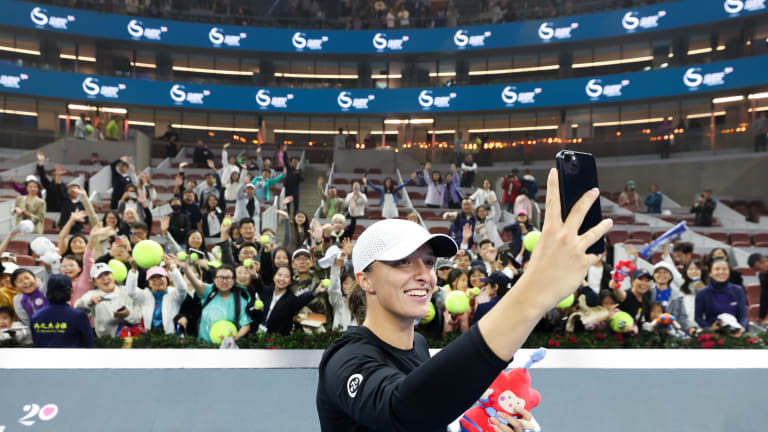Beijing, China
How a cleaner, risk-averse game led Iga Swiatek to glory in Beijing
By Oct 08, 2023Beijing, China
Swiatek beats Samsonova to take China Open title; Korda stuns Medvedev in Shanghai
By Oct 08, 2023Beijing, China
Iga Swiatek wins final WTA 1000 title of 2023 in Beijing
By Oct 08, 2023Beijing, China
Thriving in Beijing’s “respectful” atmosphere, Iga Swiatek books Liudmila Samsonova clash in final
By Oct 07, 2023Beijing, China
Iga Swiatek ends Coco Gauff's 16-match winning streak to advance to China Open final
By Oct 07, 2023Beijing, China
Coco Gauff wins 16th straight match to set Beijing clash with Iga Swiatek
By Oct 06, 2023Beijing, China
Aryna Sabalenka, Elena Rybakina to duel in Beijing; Coco Gauff to meet Maria Sakkari
By Oct 05, 2023Beijing, China
Jannik Sinner leaves Beijing with a title, a career-high ranking, and a step closer to the ATP Finals
By Oct 04, 2023Beijing, China
Can Jannik Sinner, who pinned back Carlos Alcaraz, get his first win over Medvedev in the Beijing final?
By Oct 03, 2023Beijing, China
Daniil Medvedev through to semifinals at China Open, while Iga Swiatek wins in tournament debut
By Oct 02, 2023Beijing, China
How a cleaner, risk-averse game led Iga Swiatek to glory in Beijing
“Honestly, I think I played less aggressively than in past tournaments," the Pole said after beating Liudmila Samsonova.
Published Oct 08, 2023
Advertising

Swiatek improved to 4-0 against Samsonova all-time with the win.
© Getty Images
Advertising

Swiatek’s secret to success is…hitting fewer winners?
© Getty Images